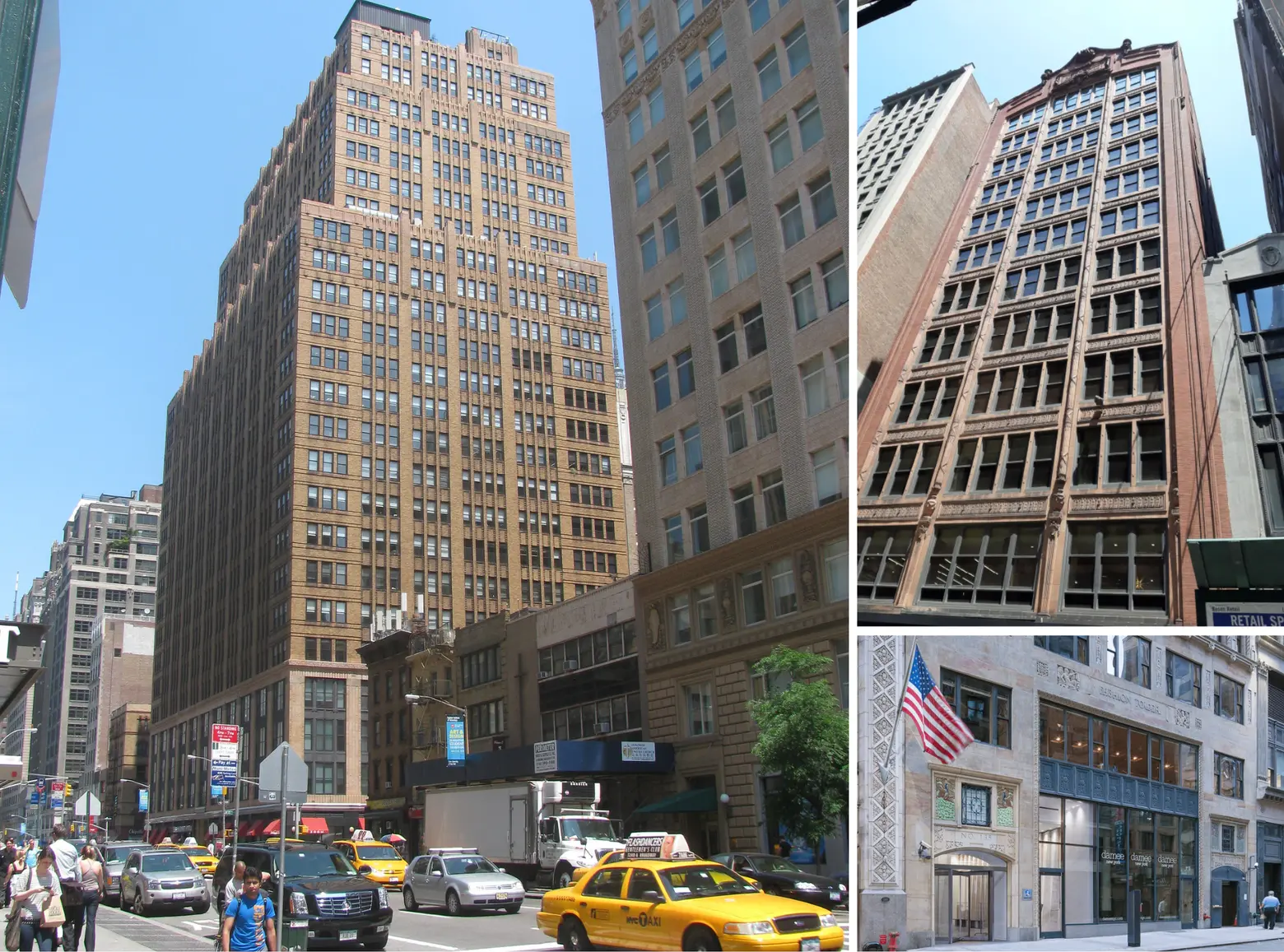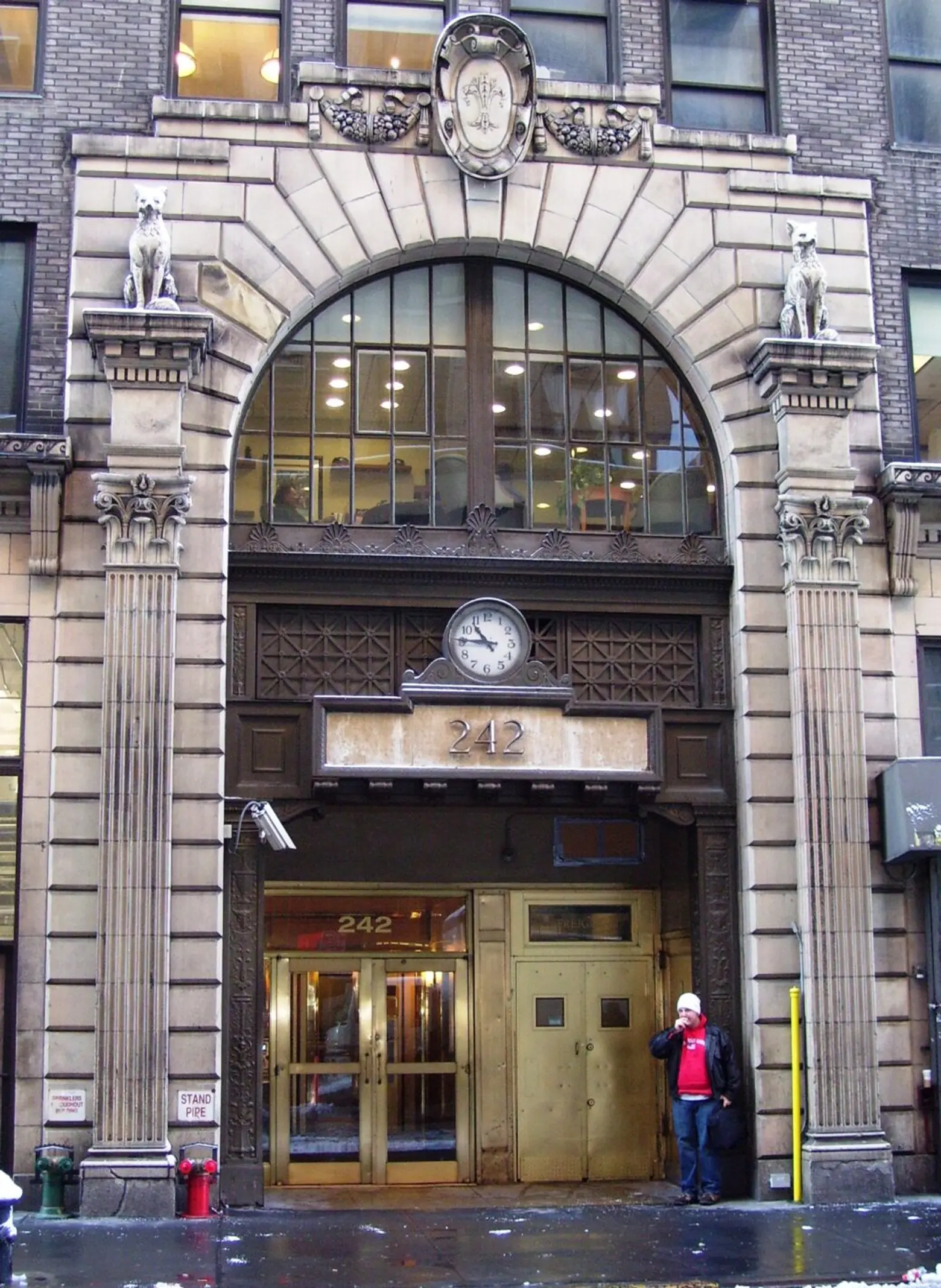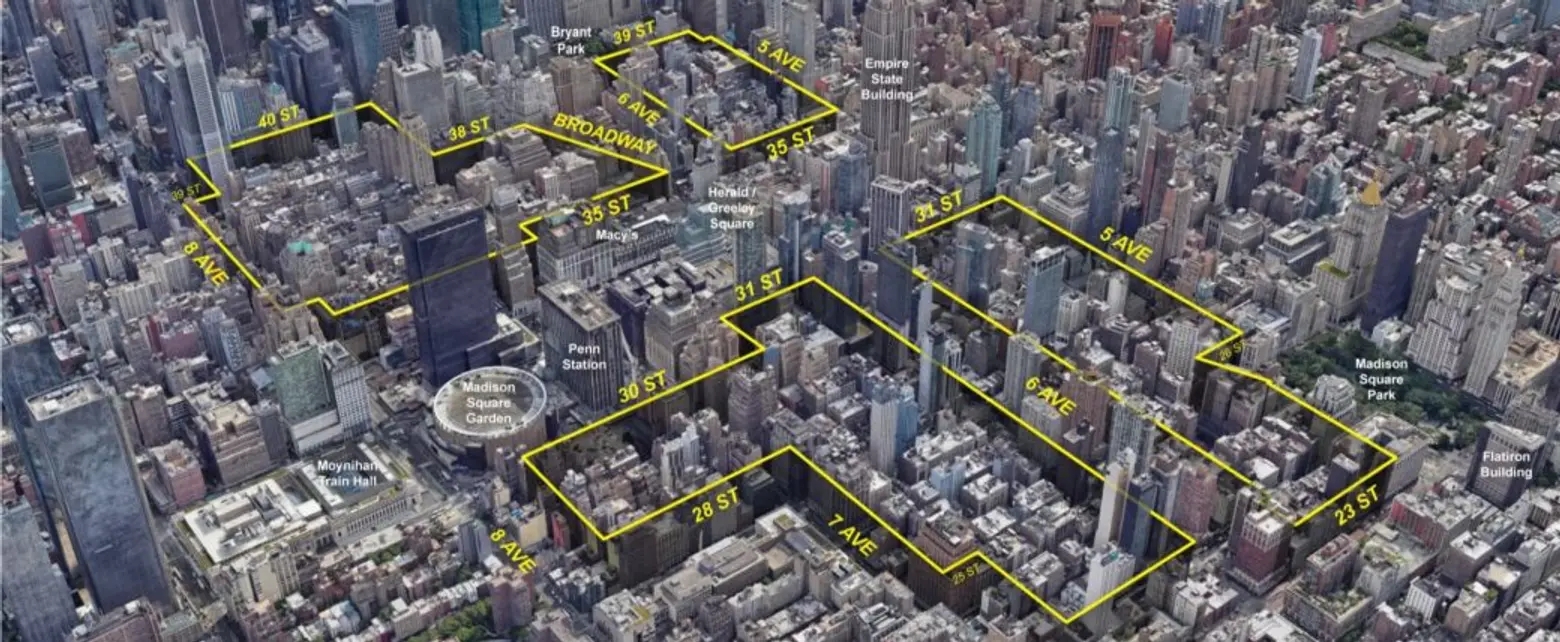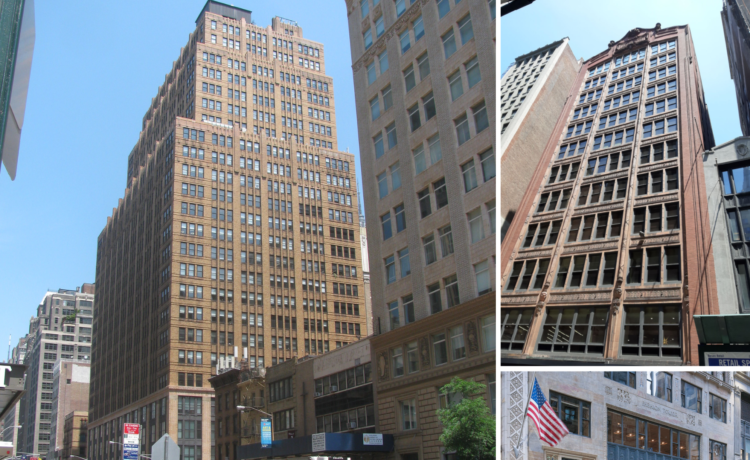
On left: Lefcourt Clothing Center, photo by Eden, Janine, and Jim on Flickr; On right: Barbey Building and Fashion Tower, courtesy of Landmarks Preservation Commission
Several notable skyscrapers in the Garment District are up for landmark status. The Landmarks Preservation Commission (LPC) on Tuesday voted to calendar five buildings in Midtown that are architecturally notable, as well as significant to the history of the neighborhood. The potential landmarking comes as Mayor Eric Adams’ plan to rezone Midtown South, which would allow for up to 10,000 new homes, enters public review.
LPC began surveying the area in 2023 and identified five buildings in the area that captured the history of the Garment Center and the area’s significance to New York City. The neighborhood evolved several times over the decades, from a residential neighborhood and an entertainment district to a hub for business.
The 12-story Barbey Building at 15 West 38th Street is the oldest property up for landmark consideration. Designed in 1908 by Delano & Aldrich, the building features a grid of window bays organized within a frame of red-colored brick and terra cotta with Neo-Classical elements. As one of the earliest tall loft buildings, the Barbey building was home to millinery and garment companies, architectural offices, and artists’ lofts. From 1985 to 2019, the building served as the corporate headquarters for Lord & Taylor.
Designed by celebrated architect Emery Roth in 1925, Fashion Tower is a 20-story building at 135 West 36th Street. The tower features a distinctive blend of Medieval, Renaissance Revival, and Art Deco styles, with colorful peacocks at the lobby and freight entrances and winged angels holding cutting shears and brushes. According to the commission, these symbols are rare in the Garment District.

At 242-246 West 30th Street, the Furcraft Building rises 14 stories. Designed by Henry I. Oser in 1926, the building sits on what was known as “Furriers’ Street,” which served as the heart of the city’s thriving fur industry. During this time, more than 85 percent of the country’s fur garments were manufactured in New York City, according to the LPC. The well-preserved limestone building features an entrance flanked by two foxes and the facade of a Greek temple at the top, which was likely visible from Penn Station during its early years, researchers noted.
The 29th Street Towers consists of a 16-story tower and a 14-story tower, developed by two different developers, but both designed by Henry Oser. The towers were built for fur manufacturing, evident in the decorative grotesques featured at the entrance of the building. One shows a man holding a beaver about to feed it, and the next shows him inspecting its pelt. The towers’ intact facade and terra cotta decoration represent a “standout example” of manufacturing buildings built to house the fur industry in the Garment District.

Known as the Lefcourt Clothing Center, the 27-story brick building at 275 Seventh Avenue was designed in 1927 by Ely Jacques Kahn. The Art Deco building takes up the entire block and has setbacks starting on the 18th floor, textured brickwork, and decorative metal window enframenents at the second through fourth stories, which were originally showrooms.
In addition to holding offices and manufacturing, Lefcourt Clothing Center was home to the International Ladies Garment Workers Union, which leased a floor for a health center for its members and later bought the entire building. Several levels of the building served as a health care facility for the union workers, providing examinations and prescriptions for as little as $0.35 a month, or $8 today.
Public hearings will be scheduled for all five properties in the near future. If the commission designates the buildings as individual landmarks, any changes would have to be approved by the LPC.

The possible landmarking comes as Midtown South prepares to go through major changes. The public review began this year for a proposal to rezone 42 blocks in the neighborhood to allow for 9,700 new homes, with just over 2,800 of them affordable. The rezoning would allow for larger developments and the conversion of industrial and office buildings into residential towers.
RELATED:







Recent Comments